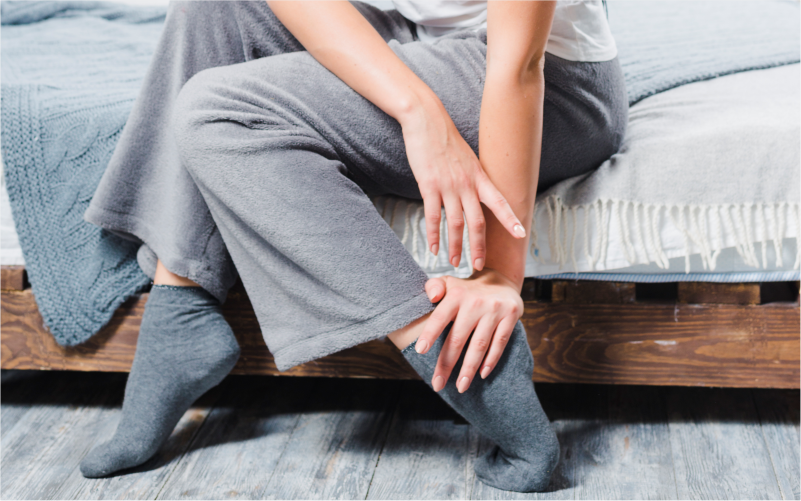Introduction
Achilles tendinitis is a common condition characterized by inflammation of the Achilles tendon, the large tendon connecting the calf muscles to the heel bone. This condition often results from overuse, repetitive stress, or improper footwear. Achilles tendinitis can cause discomfort and affect the ability to engage in physical activities, but with proper care, most people can manage and recover from this condition.

Symptoms of Achilles Tendinitis
Pain: Pain and stiffness along the back of the heel, particularly after physical activity or prolonged periods of rest.
Swelling: The affected area may become swollen and tender to the touch.
Stiffness: Reduced flexibility and increased difficulty in pointing the toes.
Warmth and Redness: The skin around the Achilles tendon may feel warm to the touch and appear reddened.
Diagnosis of Achilles Tendinitis:
Medical History and Physical Examination: The doctor will discuss symptoms and examine the foot and ankle to assess tenderness, swelling, and range of motion.
Imaging Tests: X-rays or imaging studies like ultrasound or MRI may be used to visualize the Achilles tendon and rule out other potential issues like a tear or rupture.
Biomechanical Assessment: Analyzing the individual’s gait and foot mechanics to identify contributing factors.
Treatment of Achilles Tendinitis:
Rest and Ice: Resting the affected foot and applying ice to reduce inflammation can alleviate symptoms.
Physical Therapy: Specific exercises to strengthen the calf muscles and improve flexibility can aid in rehabilitation.
Medications: Nonsteroidal anti-inflammatory drugs (NSAIDs) may be recommended to manage pain and reduce inflammation.
Orthotics: Custom or over-the-counter shoe inserts can provide additional support and correct biomechanical issues.
Footwear: Wearing appropriate footwear with proper arch support and cushioning is essential for recovery.
Bracing: In severe cases, a brace or walking boot may be prescribed to immobilize the foot and allow the tendon to heal.
Precautions and Lifestyle
Gradual Return to Activity: It’s crucial to ease back into physical activities gradually to avoid re-injury.
Stretching Routine: Regular stretching, especially of the calf muscles, can help prevent recurrence.
Footwear Selection: Choose shoes that provide proper support and cushioning, especially during exercise.
Cross-Training: Incorporating low-impact activities like swimming or cycling can reduce stress on the Achilles tendon.
Listen to Your Body: Pay attention to any signs of discomfort and modify activities accordingly to prevent overuse.
While Achilles tendinitis can be bothersome, most individuals respond well to conservative treatments. It’s essential to consult with a healthcare professional for an accurate diagnosis and personalized management plan based on the severity of symptoms and individual circumstances.







